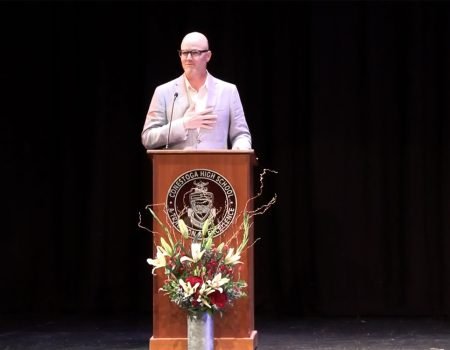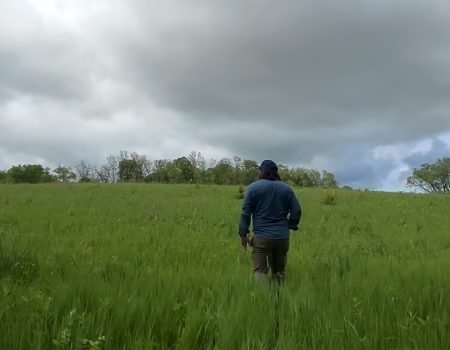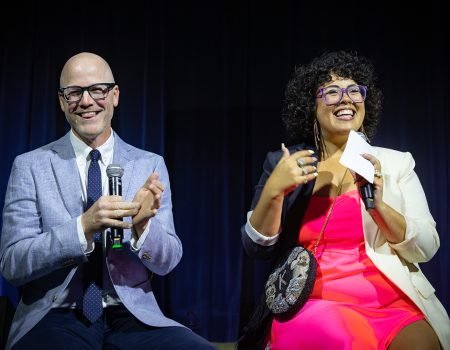Koyaanisqatsi
Two weeks ago Friday morning, Abbi, Maggie, Elsie and belted in for what would be our family’s first foray outside of a three-mile radius in a year, and our longest road trip ever: 675 miles on Interstate 95 from Wilmington, Delaware, to Bray’s Island, South Carolina. There — thanks to my vaccinated in-laws and their guest house — we were able to Spring Break.
I-95 stretches 1,908 miles through fifteen Northeast, MidAtlantic and Southern states, serving 110 million people across an area as densely populated as Western Europe. It facilitates 40 percent of the gross domestic product. And on any given Tuesday, as many as 30,000 18-wheelers traverse its span.
I-95 is not much to look at. From Wilmington to Richmond, it races, white-knuckled, through some of the most heinous backsides in America: acres of strip malls, shipping containers, oil refineries, gas-flaring smokestacks, crumbled factories, prisons, landfills and RV lots.
The road itself is a mess of uneven pavement, potholes and patches. Driver’s push 80 miles an hour while texting, inhaling Carl’s Jr., and gulping Gatorade (“Electrolytes!”). Debris and litter line its edges. Graffiti streaks its cement. Abandoned vehicles dot the shoulders. And cut rate motels lure the weary.
There are moments of real beautify and awe, though: crossing the wide; sparkling Susquehanna; spotting the U.S. Capitol; soaring through miles and miles of deep, pine forest.
Overall, it was an uncomfortable experience; our uniquely American Moment was scribbled across every surface. Massive parking lots had been converted to COVID testing sites, and were strewn with fatigued National Guardsmen and blue-scrubbed volunteers. When absolutely imperative, Rest Stops were toxic in their disrepair. And they were food deserts, bereft of anything lacking excessive amounts of corn syrup, sodium, sugar and/or bleached flour.
Below the Mason-Dixon, Billboards screamed, “SINNER!” and “LIAR!” They took sides, yelling, “Fuck Biden!” and “Impeach Trump!” And they sought restitution for the aggrieved. “INJURED? 1-800-TUCKER-WINS.” Oversized Confederate flags waved in the spring wind, one with a plaque legible from 100 yards at 75 miles per hour that read “The Confederate States of America.”
A few miles off of Exit 33, past the Waffle House, Carolina Country Store and Pocotaligo Worship Center, we rolled the windows down. The air was warm and sweet. As we wound slowly down the dusty, gravel road past the Marvin’s Pond where the egrets and heron sleep, all fell silent save for the sound of our tires in the gravel. We turned off the ignition, and slipped into a dreamlike, Low Country dusk.
I woke well before sunrise, poured a mug of coffee, and headed outside. The sky was inky black, and dotted with stars. To the east, a thin wisp of clouds suggested the faint glow of the sun just below the horizon. Bats scurried overhead. And in the thicket of Palmetto Palms, Loblolly Pines, Wax Myrtle and Sweet Gum across the road, an owl — the same owl with the same gutteral, almost primate-like call that I have heard there for years — announced himself.
“Who? Who who who who?”
I walked tentatively down the road, leery of the darkness. Spanish Moss rustled overhead. I paused along the causeway, and turned east across the wheat-colored wetlands at the edge of the creek. An osprey loped across the slate blue sky. And the sun made its way through and over the trees in tiny, blinding, dizzying increments.
I turned west along a grassy path along the pond. Twin eyes coasted just above the surface, tracking me. The alligators were awake, and floating. As I walked along the pond towards the river, they grew in size. I startled one along the shore, a hefty-looking six footer who looked like he could swallow a Springer Spaniel whole. He whipped his spiny tail, leapt from the dew-drenched grass, and disappeared into the slick, green water.
Later, at the edge of the Broad River, I was stopped dead in my tracks by the number, diversity and volume of bird calls exploding in the air all around me: oystercatchers, buntings, plovers and woodpeckers.
This is an actual recording!
I began grinning, then laughing out loud; I couldn’t believe how beautiful it was.
As our Spring Break came to a close, I raised my glass to express gratitude to my in-law’s for sharing their home, and its attendant beauty. I pulled my notebook from my pocket, and read an abbreviated list of just a few beautiful moments from the days prior: dolphins diving through the sun-diamond wake of our boat, bluebirds nesting in the back yard; butterflies, large-mouth bass, shooting stars, and bald eagles. Card games, fire pits, popcorn and pony rides. It was magic.
Back in Wilmington Monday night, I joined a Zoom discussion of the film, “Koyaanisqatsi.” The experimental, 1982 Godfrey Reggio documentary (with a Philip Glass score, natch) was the first art film I’d ever seen, a VHS tape plucked from the shelves of Berwyn Video when I was a fifteen-year-old clerk there.
The film is epic, a visual opera set to church organs and chanting, in which the world around us is rendered in striking, slow-motion, time-lapsed juxtapositions. A volcano erupts. A building collapses. A highway is streaked with headlights. And river surges its banks.
As Zoom discussion turned to COVID, climate change, and the end of days, I flashed back to our twelve-hour return trip when — somewhere between a wind-blown, zombie-prone gas station outside Stony Creek, Virginia, and the burnt-out shell of a tractor trailer smoldering on the Oxen Hill, Maryland, exit ramp — Civilization & It’s Discontents once again overwhelmed me.
So I turned up the Foo Fighters, leaned into the cruise control, and head banged all the way home, thinking, ‘Those alligators are going to be just fine.’



